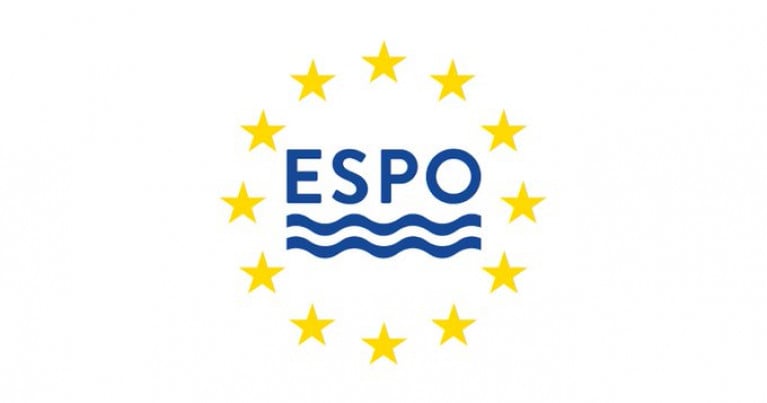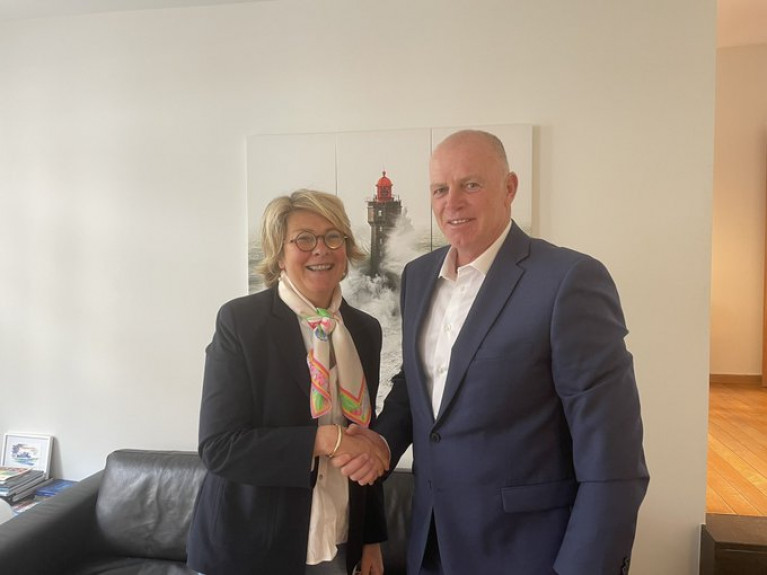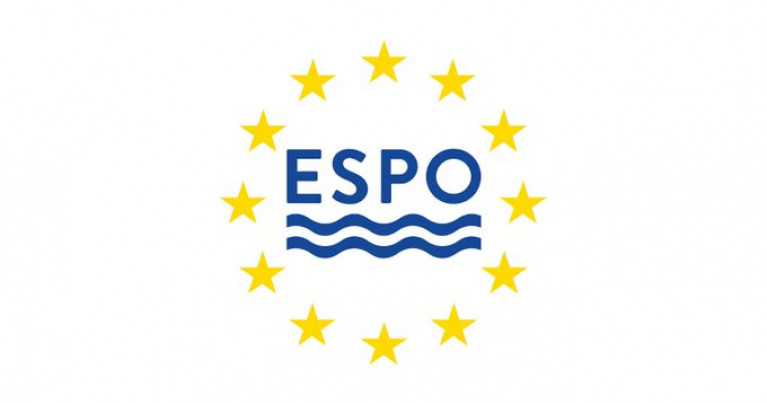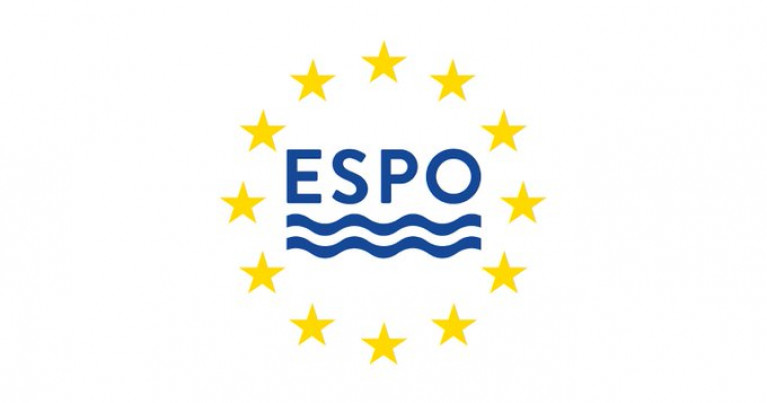Displaying items by tag: Onshore Power Supply
Ports And Terminal Operators in Europe Call for OPS Where it Makes Sense in AFIR & FuelEU Maritime
The European Sea Ports Organisation (ESPO) and the Federation of European Private Port Companies and Terminals (FEPORT) have jointly agreed that the proposals for an Alternative Fuels Infrastructure Regulation (AFIR) and the FuelEU Maritime Regulation should enable the deployment of OPS where it makes the most sense.
The greening of shipping is a priority for European port stakeholders. This entails addressing emissions from shipping both during navigation and at berth. Onshore power supply (OPS), also known as shore-side electricity, is one of the technologies available to help reduce greenhouse gas emissions at berth.
Both organizations underline the need for an ambitious deployment of OPS as a means to reduce the harmful emissions of ships of nitrogen oxides, sulphur oxides and particulate matter. In this way, port stakeholders can contribute to the much-needed greening of shipping.
Article 9 of the Commission AFIR proposal could result in the entire port needing to have OPS if it receives more than a certain number of port calls by a container or passenger vessel. This would entail significant additional public investment for deploying OPS compared to a more focused approach. These investments are unlikely to be cost-efficient in relation to the emission reductions that they can deliver.
ESPO and FEPORT would instead propose an approach which focuses on OPS deployment per location (such as berths or terminals) in the port, rather than per port. This would ensure that OPS, also known as shore-side electricity, is deployed where it makes the most environmental and economic sense, whilst maintaining the established roles and responsibilities of the various port stakeholders[1].
To avoid a waste of limited time and public resources, the legal framework on the European level should ensure that OPS is deployed at locations in the port where each installation will deliver maximal emissions reductions per Euro invested.
To optimise the use of OPS as a solution to emissions at berth, ESPO and FEPORT therefore call for the following:
1. A requirement for ships to use OPS when it is available in ports in FuelEU Maritime
2. Prioritising OPS deployment in port locations where it reduces emissions the most in AFIR
This approach does not assign new responsibilities to stakeholders in the port, and would respect the diverse governance models of European ports.
By calculating the number of port calls based on the relevant locations in the port, it becomes possible for Member States and ports to prioritise investments in OPS where it makes the most sense in terms of environmental benefit (GHG reductions). Accordingly, locations in the port that are normally not called at, or that are not intended to be called at by the ship segments required to use OPS at berth, such as underused terminals, can be excluded from the requirement.
ESPO and FEPORT welcome that such an approach has been submitted by different members from different political groups and hopes that this approach will be well reflected in the compromise position that is being established by the rapporteur and shadow rapporteurs in the Transport Committee.
ESPO and FEPORT look forward to supporting policymakers in introducing a common-sense approach to OPS.
The European Sea Ports Organisation (ESPO) represents the port authorities, port associations and port administrations of the seaports of 22 Member States of the European Union and Norway at political level. ESPO has also observer members in Albania, Iceland, Israel, Montenegro, Ukraine and the United Kingdom. ESPO is the principal interface between the European seaport authorities and the European institutions. In addition to representing the interests of European ports, ESPO is a knowledge network which brings together professionals from the port sector and national port organisations. ESPO was created in 1993.
FEPORT represents the interests of 1225 private port companies and terminals performing cargo handling and logistics related activities in European seaports, which employ over 390.000 workers. The organisation was founded in 1993 to promote the interests of its members, and to maintain constant dialogue with all EU institutional and non-institutional stakeholders. FEPORT is based in Brussels, Belgium.
[1] As defined in Regulation (EU) 2017/352.
At a meeting between the European Sea Ports Organisation (ESPO) and global trade association Interferry, a common work programme was agreed to promote an environmentally sustainable future for the European ferry business through the provision and use of onshore power supply (OPS).
Underlining the shared challenges and priorities of their Europe-wide memberships, ESPO and Interferry confirmed the following joint approach:
1. Ferries must be recognised as a sustainable passenger transport mode that link Europe’s cities and regions, as well as providing a green mode of urban transport. This should be better reflected in Europe’s transport policy, in particular in Flagship 3 of the European Commission (EC) Sustainable and Smart Mobility Strategy (available here).
2. Ferry ports should act as soon as possible to deploy OPS, and ferry lines should commit to using OPS whenever it is available. The agreement notes that, increasingly, many ferries will use OPS not only for their energy consumption at berth, but also to recharge batteries for propulsion – prompting significantly higher power demand that will require corresponding upscaling of the grid network.
3. To optimise the effective deployment and use of OPS for the ferry industry, investments should initially be made where it makes most sense in terms of maximising emissions reductions per installation. Accordingly, first priority for OPS development should be given to ferry terminals with high frequency of operation, as opposed to those with only occasional ferry calls. The OPS obligations set out in the EC proposals for Alternative Fuels Infrastructure Regulation (AFIR), which refer to a specified minimum number of calls per port, should therefore be adapted to foresee a minimum number of calls per terminal.
4. The exemptions to the OPS requirements under FuelEU Maritime and AFIR should be aligned to ensure the effective deployment and use of OPS. Both ports and ferries call for a coherent and predictable framework that provides legal certainty for stakeholders.
5. Since greening the shipping sector and deploying OPS in ports will require huge investments, revenues from a maritime European Union (EU) Emissions Trading System, or any similar market-based measure, should go towards funding OPS deployment through a dedicated fund benefitting both the ports and shipping sectors.
6. New fuels and technologies for greening the shipping industry should be encouraged and promoted, alongside development of the relevant safety and operational standards. The accompanying financial and regulatory framework should be technology-agnostic to ensure due consideration for all viable options. With the exception of OPS, at this early stage it does not seem desirable to impose a requirement to deploy infrastructure for certain other technologies or fuels. Developments and investments should be based on bottom-up projects and bilateral commitments among different stakeholders.
7. An EU-wide permanent and total tax exemption for electricity provided to ships at berth should be introduced in the Energy Taxation Directive in order to provide stronger and clearer incentives that promote the uptake and use of OPS.
Interferry CEO Mike Corrigan comments: “Electrification of ship propulsion is key to meeting massive regulatory challenges for reducing maritime greenhouse gas emissions - interim cuts of some 50% are due by 2030, leading to ‘net zero’ status by 2050. Ferries are already leading the shipping industry’s transition to hybrid and fully electric systems, but major expansion of the electricity grid network is absolutely crucial to supporting the ultimate objectives. To this end, Interferry has embarked on a schedule of meetings with senior decision makers from governments, ports and energy companies to urge investment in OPS infrastructure. I very much value our collaboration with ESPO to work on mutual sustainability ambitions".
ESPO Secretary-General Isabelle Ryckbost concludes: “Ports in Europe are very eager to move forward in achieving the decarbonisation goals and progressing their green priorities. The greening of shipping is a priority for ports. The best way to go forward is to engage in dialogue with the different stakeholders. Each segment has its own priorities and solutions. I am very happy we started this dialogue a few months ago with Interferry and can now engage together on an efficient way to reduce emissions at berth. Moreover, the role ferry transport can play in greening passenger transport in Europe is severely underestimated. Ferries are connecting people, regions and economies. I’m happy to continue the discussions with Interferry”.
European Sea Ports Organisation Welcomes Cross-Party Support in EU Parliament for Prioritising OPS Where it Makes Sense
The European Parliament Committee on Transport and Tourism (TRAN) will today (19 April) discuss the draft Report from MEP Ertug on the proposal for an Alternative Fuels Infrastructure Regulation (AFIR).
On 20 April, the TRAN Committee will also discuss the draft Report from MEP Warborn on the proposed FuelEU Maritime Regulation, as well as the more than 1000 TRAN amendments on the AFIR proposal.
The European Sea Ports Organisation (ESPO) welcomes the cross-party support in the TRAN Committee for a legislative framework that supports Onshore Power Supply (OPS) deployment and use in ports in a way that makes sense in terms of emissions reductions and cost effectiveness.
Based on the amendments tabled, TRAN MEPs from different political groups appear to support an approach that:
- Prioritises investments in OPS where it makes the most sense in terms of maximising environmental benefit
- Defines the need to install Onshore Power Supply (OPS) - and hence the scope of the OPS obligations - on the terminals with a minimum level of traffic volume per terminal (instead of per port) to prioritise busy terminals and avoid underused capacity being installed. Such prioritisation is necessary to ensure that investments in OPS are allocated where they can deliver significant emission-savings, helping to deliver on the greening of shipping;
- Recognises that the port cannot be held responsible for a (temporary) lack of grid;
- Develops a mechanism obliging the users to inform the ports about the use of OPS and the power needed during a certain port call;
Safeguards and further enhances the coherence between AFIR (supply of OPS) and FuelEU Maritime (demand/use of OPS).
European ports welcome this clear support for an ambitious and common-sense approach to the deployment of onshore power supply (OPS) in the European Parliament.
“It will be really all hands at berth for developing Onshore Power infrastructure in Europe’s ports. Ports definitely see the added value of an ambitious framework for onshore power supply at these terminals in the port where most emissions are generated and most emissions gains can be made. Given the high cost and the massive need for taxpayers money, we should avoid unnecessary deployment of OPS where it does not generate substantial emissions reductions. Ports in Europe are not only accommodating ships. They will be playing a crucial role, as energy hubs, in making the energy transition of Europe’s economy and society happen. This will require a lot of additional investments, be it in offshore, circular or hydrogen. At some point, it is important to prioritise and pick the biggest emissions reducers,” says Isabelle Ryckbost, ESPO Secretary General.
Given the cost and complexity of the deployment of OPS, it would be very inefficient to oblige terminals and/or berths which are occasionally used or occasionally called at to be equipped with OPS. Europe’s ports therefore back an approach whereby the scope of the OPS requirements would be determined by the number of port calls made at individual terminals by ships falling within the scope of AFIR and FuelEU Maritime. That way, terminals that are rarely used and terminals that are not equipped to serve these ship segments do not automatically qualify for the provision of OPS.
ESPO Secretary General, Isabelle Ryckbost, concludes: “We very much welcome the support from MEPs for the terminal-approach and call on policymakers in Parliament and Council to take these crucial amendments into consideration when building a compromise. We look forward to working together with all stakeholders to arrive at a legislative framework that ensures that OPS is deployed where it makes sense. There is no time and no money to lose.”
ESPO is a partner in helping deliver an ambitious and effective approach for the use and deployment of OPS in European ports, and remains committed to the greening of shipping as part of the European Green Deal and Fit for 55.
The Onshore Power Supply (OPS) is part of the solution to greening the shipping sector. It is an important tool for reducing CO2 emissions and air pollution at berth and in ports.
The greening of the shipping sector is a priority and ports want help to facilitate this process. Many ports in Europe are therefore stepping up their efforts to deploy more OPS and want (and need) to invest in OPS where it makes most sense.
An ambitious OPS deployment plan entails large investments up front and significant operational costs. These costs cannot be borne by ports alone, making public funding a precondition for a successful deployment of OPS.
For Europe’s ports, the only way to ensure a rapid deployment of OPS and avoid a waste of public funds is to focus on deploying OPS where it delivers cost-effective reductions of greenhouse gas emissions and air pollution at berth. Together with its members, the European Sea Ports Organisation (ESPO) has put forward a framework that can guide ports and policy makers in developing an effective and intelligent approach for OPS.
“Europe’s ports want to go for more OPS. If ports want to prepare an ambitious and effective OPS deployment plan, there is a need to focus deployment efforts on where OPS would make sense. The cost of installing OPS is too high to just decide to go for OPS everywhere, without a proper analysis of costs and benefits. By pooling the experiences from ports who have done their homework on OPS, we have been able to produce a practical list of do’s and don’ts for OPS. We identified a series of constructive criteria which helps in prioritising investments. We believe this assessment will give policy makers a better understanding on what is needed to come to an ambitious but effective OPS deployment policy as one of the tools to reach the ultimate goal to achieve, which is the greening of the shipping sector”, says ESPO’s Secretary General Isabelle Ryckbost.
To help facilitate constructive and effective policy on OPS, ESPO has identified key criteria to be assessed together: the OPS readiness of the ship (or shipping segment), is the vessel (segment) spending sufficient time at berth for it to make sense to connect, are there frequent users of a berth (OPS connection is easier in case of a regular vessel call at a the same berth), is the berth enough used to make it worth the investment, planned new berths (where OPS can directly be integrated in the planning of the port).
In addition to these key criteria, some port-specific circumstances need to be considered: the location of the berth and of the port, berth size and layout to match the vessel connection, access to (public) funding, available grid capacity and access to renewable energy and space on the berth to integrate the OPS infrastructure.
Overall, Europe’s ports believe that it is very difficult to identify a shipping segment which by definition and without any other considerations would be identified as OPS-suitable. This being said, certain shipping segments could be more appropriate and prioritised. Shipping segments where the gain in terms of emissions reduction is the largest, such as ultra large container vessels, could be addressed first. It could also be appropriate to focus on the cruise and ferry segments since they generally berth near built-up areas and urban agglomerations. However, for each of these segments, additional considerations have to be taken into account.
As an overall criterium, ESPO believes there should be corresponding engagements between vessels, energy providers, and ports in order to make OPS a viable instrument in terms of both environmental and cost effectiveness.
Moreover, whilst the cost of installing OPS varies from port to port and between different locations in ports, OPS generally comes with a very big price tag. It is a fact that all OPS projects so far have received substantial public funding or support. When preparing the financial case for OPS deployment, we need to consider not only the cost of setting up the system, but also the grid connectivity and operational costs with potentially high fixed costs that are not borne by the user. For ESPO an ambitious OPS deployment plan must be accompanied by an ambitious OPS funding policy.
ESPO finally stresses that the deployment of OPS takes time and must, if relevant, be seen against other possible technologies which can be deployed in the same timeframe (10-15 years).
With its Communication “Towards an intelligent legislative framework for OPS”, ESPO wants to contribute in a constructive way to the drafting and further discussions of two upcoming Commission proposals setting out the policy and requirements on the deployment and use of onshore power supply. The first is the FuelEU Maritime proposal, which will tackle the demand for clean fuels from shipping, including OPS. The second file is the review of the Alternative Fuel Infrastructure Directive, known as the “AFID”, which regulates the supply of fuels, amongst others the provision of clean fuel infrastructure.

































































